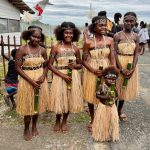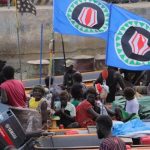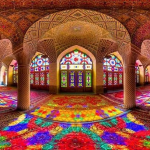What is the North Korea flag? What does the North Korean flag mean? And are there variations on the flag of North Korea? Here is the ultimate guide to the flags of the Democratic Peoples Repubic of Korea (DPRK).
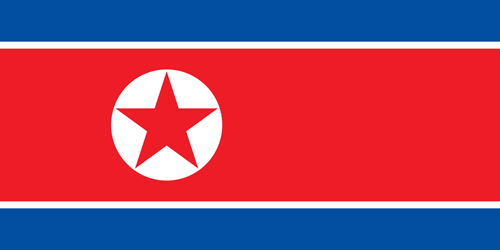
History of the North Korea Flag
The Flag of The Peoples Republic of Korea (1946-1948)
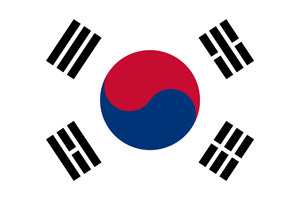
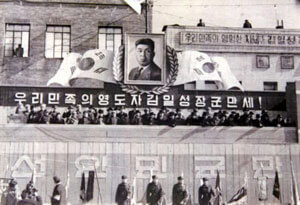
Firstly, after the defeat of the Japanese at the end of World War 2, the Northern part of the Korean peninsula was occupied by Soviet forces in 1946 and created the Provisional People’s Committee for North Korea. They designed a flag with a modified taegeuk symbol and, from top right to bottom left, the heaven, fire, water and earth Taoist symbols. This flag resembles the current flag of South Korea (see our article about that one here)
Two years after that, in 1948, the Democratic People’s Republic of Korea was born. The North Korea flag chosen was a very different design to the last one back then. It had a red stripe with a white and blue border. And inside the central stripe is a white disk with a soviet red five-pointed star. This is now the current North Korea flag that we see today.

What is the meaning of the flag of North Korea?
The North Korea flag can be displayed both vertically and horizontally. The red star represents communism, red panels represent patriotism, white stripe is unification and culture, with the blue stripe representing unity.
President Kim Il Sung and his successors have often talked about the importance of the flag. So, like many other patriotic countries, it can often be seen flying over government buildings, and during holidays the only country that can outdo it for flags per square mile is probably the US.
Speaking of the US: from a personal point of view it was very strange to see it paired with the American flag at the Hanoi Summit; something I did not expect to see! From what we are aware this is the only time the North Korean flag and the flag of the USA have been flown side by side – well at least until Trump returns….
North Korea’s Flag – Military Flags
You can see our blog about the North Korean Military here, but what about the meaning behind those flags?
The Korean text “조국의 통일 독립과,인민의 자유와 행복을 위하여 “ located at the top and bottom of all the military flags translates into “For the unification and independence of the motherland, and the freedom and happiness of the people”
The 4.25 on the left-hand corner of each flag symbolizes Military Foundation Day.
The North Korean Flag of the Korean People’s Army Groundforce
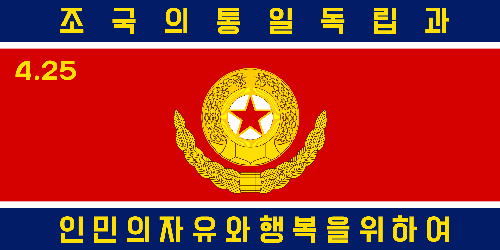
The Korean People’s Army Ground Force flag removed the national emblem and features darker blue stripes and the emblem for the Korean People’s Army in the centre.
The North Korean Flags of the Korean People’s Navy
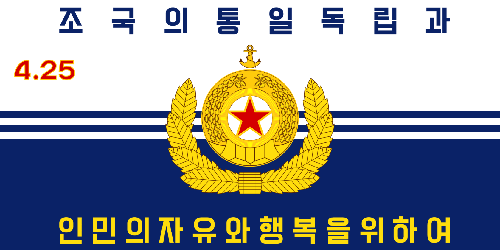
The Korean People’s Navy Flag is white with a broad blue stripe and two thin blue stripes with the Korean People’s Army emblem at the centre.
The Korean People’s Navy also used two Naval Ensigns:
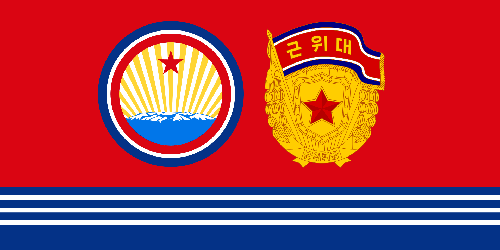
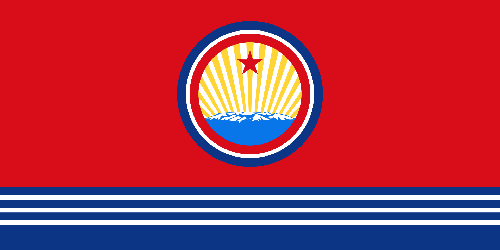
They feature Red flag with Mount Paektu in rays in a disc with national colour outlines and a red star.
The DPRK Flag of the Korean People’s Air and Anti-Air Force
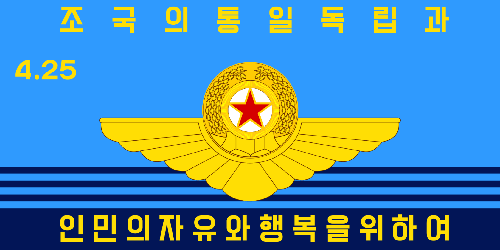
The Korean People’s Air and Anti-Air force feature the People’s Army emblem at the centre on a sky blue field with a thick dark stripe in the lower portion with three thinner dark blue lines above.
North Korean Flag of the Korean People’s Army Special Operation Force
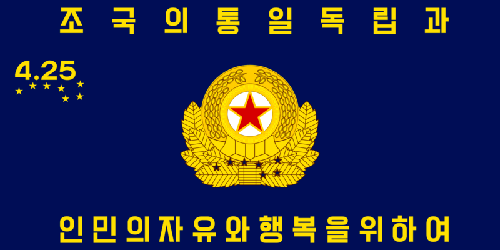
This flag features the KPA emblem and the big dipper against a dark blue background.
DPRK Flag of the Korean People’s Army Strategic Rocket Force
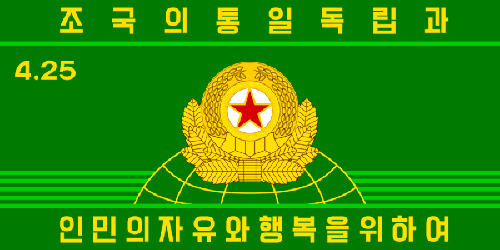
This flag features the emblem of KPA on an upper half globe against a green background.
Flag of the Worker- Peasant Guards
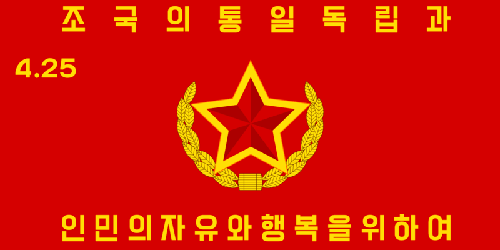
The worker Peasant guards are North Korea’s Paramilitary force. Their flag prominently features a red star and yellow text with a totally red background.
Flag of the Supreme Commander of the Korean Peoples Army
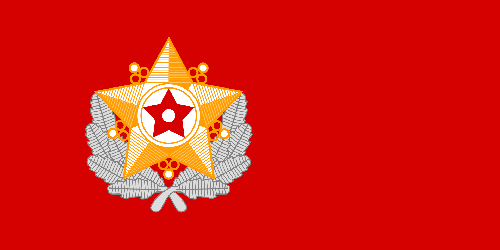
The Supreme Commander Star on a red flag. This is usually used as a war flag during military exercises. Supreme Commander of the Korean People’s Army is the highest rank possible and has been held by three people. President Kim Il Sung, General Kim Jong Il and Marshal Kim Jong Un.
North Korea’s Political Flags
The Flag of the Workers Party of Korea ( 조선로동당 )
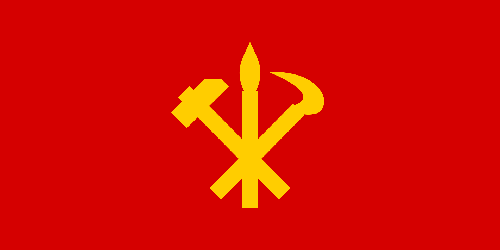
Introduced in 1949 and arguably the countries most recognizable. This flag is a combination of a hammer (workers), a writing brush (intellectuals) and a Korean sickle (peasants), crossed over a red field.
The Workers Party of Korea’s forerunner (The Workers Party of North Korea 1946-1949) also had a flag separate North Korean flag:
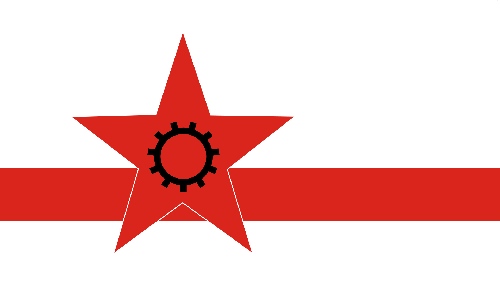
This flag features a red star representing socialism and black gear to represent the working class.
The Flag of the Kimilsungist-KimJongilist Youth League (김일성-김정일주의청년동맹)
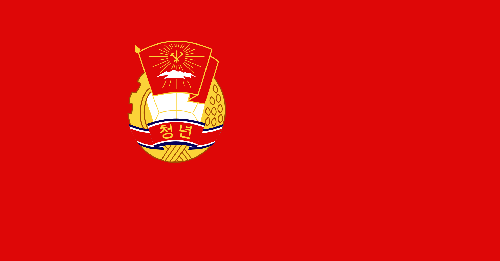
Founded in 1946 the Kim Il Sung and Kim Jong Il Youth league has the emblem of Youth League on a red flag, with “Youth” (청년) on the emblem.
The Flag of the Socialist Women’s Union of Korea ( 조선민주녀성동맹 )
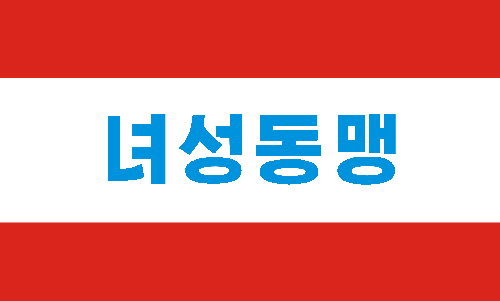
The Socialists Women’s Union was founded in 1945 and serves as a mass organization for women. Their has The name of the organization: “Women’s League” (녀성동맹) against a white background.
Flag of the Chairman of the State Affairs Commission ( 조선민주주의인민공화국 국무위원회 위원장 )
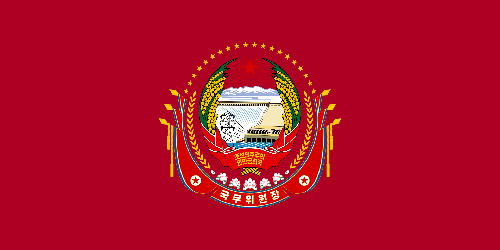
This flag made it’s debut at the June 2018 Summit between Marshal Kim Jong Un and President Donald Trump and is one of North Korea’s newest flags. It is comprised of the emblem of the Chairman of the State Affairs Commission on a red field.
Flag or the People’s Republic of Korea
Not to be confused with the Democratic People’s Republic of Korea flag, or state. The Peoples Republic of Korea was a state that existed very briefly before the division of the Korean peninsula.
The flag actually has less in common with a standard communist flag and more in line with the flag of South Korea, representing a fusion, should the two have remained unified perhaps.
You can read about the People’s Republic of Korea here.
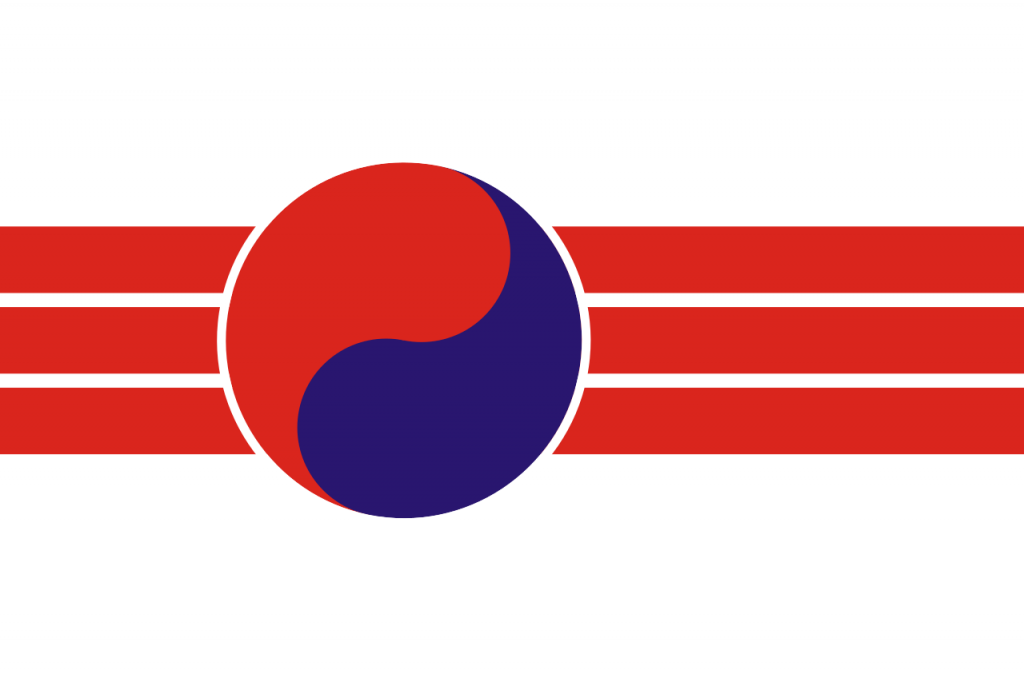
Special Regional North Korea Flags
Sinuiju Special Administrative Region
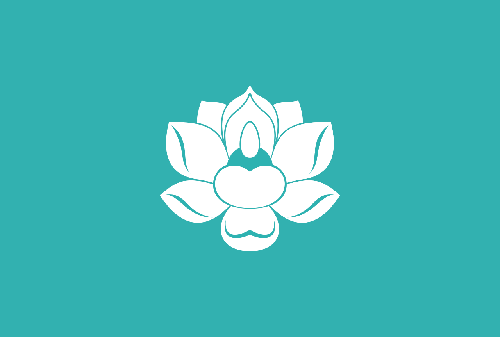
The Flag of the Sinuiju Special Administrative Region was introduced in 2002 and features a turquoise field with a white flower in the middle.
The Unification Flag of Korea
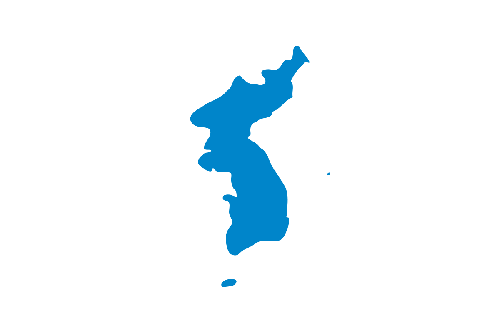
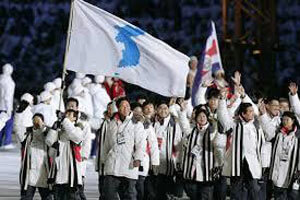
And of course the Unification Flag of North and South Korea is an unofficial 2:3 flag that is usually flown when North and South Korea are together in sporting events. It features a white background with a light blue map of Korea. We’ve written an article about that one!
Weirdest sighting of the North Korea flag?
I’m sure there are more than entrant in this race, but for me certainly it was seeing the flag flying freely next to that of the USA along the streets of Hanoi. It was of course part of the Trump – Kim summit, but still quite a site to behold.
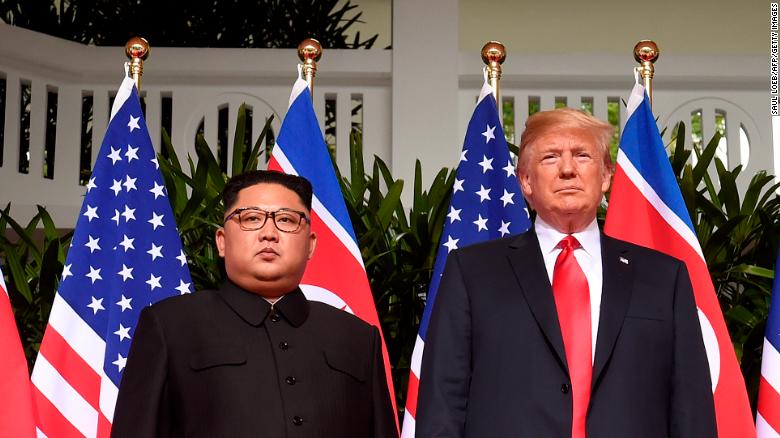
It is possible to buy a North Korean flag on one of our many North Koreans tours.
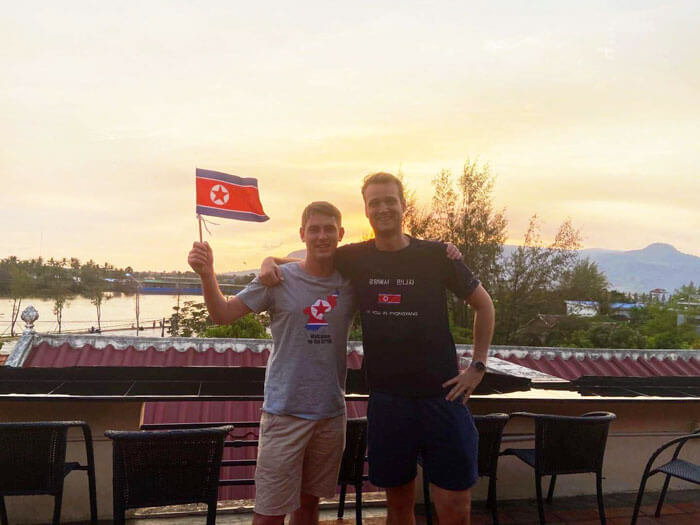
The North Korea flag in 2024
Sadly as North Korea has remained closed due to Covid-19 it has meant not only no travel into the country, but also not outside of the country. This has meant that the flag of North Korea has not been seen at international, or sporting events.
This though looks to soon be changing with North Koreans again allowed to travel and indeed take part in sporting events, thus hopefully the North Korean flag again on international display.
Click here to see our upcoming tours to North Korea or for general travel info get in touch with us!



